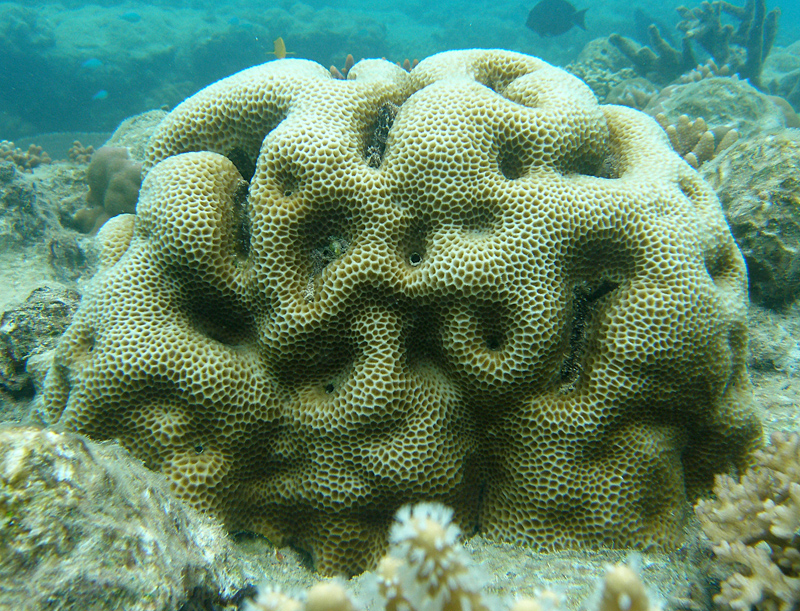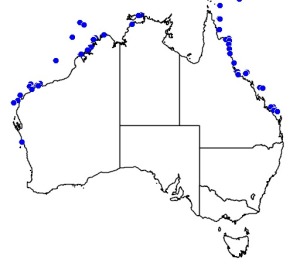Colours
Distinguishing features
A species that forms ridged massive colonies up to 3m diameter. Corallites are angular and cereoid, with alternating large and small septa and palliform lobes. Colours are cream to dark brown.
Size
- Size data has not been obtained.
Synonyms
Distribution
Distribution and habitat preferences
Reef fronts, shallow reef flats.
Can be found in most habitats around Lizard Island.
Behaviour
G. retiformis is a hermaphroditic broadcast spawner. The larvae preferentially settle in shallow waters and this is the primary habitat zone for this species. Several studies have investigated the reproductive biology of G. retiformis.
This species is slow growing like most massive Favid corals, with growth rates typically less than 0.5cm/year. It is well adapted to shallow turbid waters however, and is able to switch between autotrophic and heterotrophic modes of feeding as environmental conditions change.
Web resources
References
- Alvarez-Noriega, M., A.H. Baird,2, M. Dornelas, J.S. Madin, V.R. Cumbo, and S.R. Connolly (2016). Fecundity and the demographic strategies of coral morphologies, Ecology, 97(12): 3485-3493. LIRS catalog number 2048.
- Alvarez-Noriega, M., A.H. Baird, M. Dornelas, J.S. Madin and S.R. Connolly (2018). Negligible effect of competition on coral colony growth. Ecology, 99 (6): 1347-1356. LIRS catalog number 2239.
- Anthony, K.A.C. and K.E. Fabricius (2000). Shifting roles of heterotrophy and autotrophy in coral energetics under varying turbidity, Journal of Experimental Marine Biology and Ecology, 252: 221-253.
- View all references

